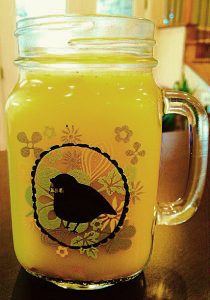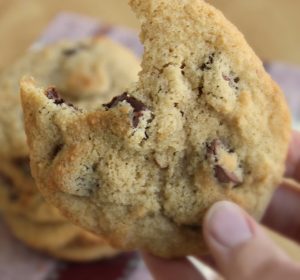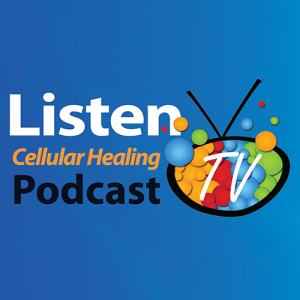Articles
Amalgam Illness
A Hero’s Journey: Healing from Ulcerative Colitis
Eat Fat, Lose Fat
How Healthy is Your Wine?
The Truth About GMOs and the Diseases They Cause – Exclusive Interview with Jeffrey Smith on Genetically Modified Organisms
Do you care about your health? The health of your family and friends? The welfare of the planet? The following must-see interview with Jeffrey Smith and Dr. Dan Pompa has the potential to change life on earth as we know it. Read on and watch this fascinating discussion of a topic that affects every being on earth and will have consequences for many years to come. Monsanto is resposible for Frankencorn. The research indicates that Monsanto does not care about the health and wellbeing of our population.
In a groundbreaking and revealing interview, Dr. Pompa discusses the dangers of Genetically Modified Organisms (GMOs) with Jeffrey Smith, the leading consumer advocate promoting healthier non-GMO choices. Dr. Pompa interviewed Mr. Smith at California Jam, a large health and wellness conference whose renowned speakers included Dr. Joseph Mercola, Andrew Wakefield, and other leaders in the industry. Smith’s exhaustive research documents how biotech companies are putting the health of society and the planet in danger by continuing to promote and produce GMO crops. This leading-edge interview shares why genetically engineered foods are destroying the health of the nation by causing numerous diseases, and the pressing need for consumers to reject GMO ingredients from their diet.
I'm here with Jeffrey Smith, thank you for being here. At the seminar, I heard you teach some amazing information. You’re one of the crusaders for anti-GMO and I really would have to say you're a crusader for saving humanity. If you don't know this man, he's the author of Genetic Roulette, Seeds of Deception, and this is also a part of your passion, The World According to Monsanto. So, not to do a whole interview about GMO, but there's a specific topic that I really want to hit on because I feel that everybody needs to hear this and it's really new information. You know, I've been following some of Dr. Seneff's work, and you just did a long interview with her that I saw. I think its ground-breaking information that I really want people to hear even ahead of time or at least draw them into the information. For years, I've been talking about the deception of cholesterol. About how people really are deceived about cholesterol and think they're dying from high cholesterol.
Dr. Seneff points out that cholesterol deficiency, or cholesterol sulfate deficiency, is the cause of many diseases. In the interview, I think that you focused on something really important; the overuse of glyphosate on GMOs which is causing this deficiency. Talk about some of the information that you've learned from her.
First of all, genetically engineered crops, where they transfer genes between species, the most common variety is the herbicide-tolerant crops. Herbicide tolerance means you can spray herbicides on the crops and not kill them, and Roundup Ready is the most popular, and Roundup’s active ingredient is glyphosate.
Now glyphosate is a very interesting molecule. It binds with all these different trace minerals, making them unassimilable. What it does in the system is a number of things because of this. It is very unique and it's efficient. It helps destroy the nutrient availability of these minerals. It kills the beneficial gut bacteria.
Dr. Pompa: Right, which is key.
Jeffrey Smith: Which is key. It’s an endocrine disrupter. It blocks the ability of the gut bacteria to produce the aromatic amino acids, including tryptophan, which is a precursor to serotonin and melatonin…
Dr. Pompa:Depression, psychological problems…
Jeffrey Smith: Insomnia…
Dr. Pompa: Even obesity…
Jeffrey Smith: Exactly! It also messes up certain enzymes of the P450 cytochrome pathway, which is a detox pathway. So when you don't have all those enzymes in place, every other toxin that you're exposed to can be amplified as it can't be released from the body.
Dr. Pompa: Right.
Jeffrey Smith: So you have this incredible, dangerous herbicide. The herbicide is now found in 75 percent of the air and rain samples.
Dr. Pompa: Hasn’t this herbicide been used for years? Why all of a sudden are we now seeing more of these problems?
Jeffrey Smith: Two reasons. One – the Roundup Ready crops have dramatically increased the use of the herbicides many fold. Someone said up to a billion pounds. I don’t have the exact number, but it's huge. Huge!
Dr. Pompa: I know in the last five years that it's escalated dramatically. Why is that?
Jeffrey Smith: It's because of the expansion of GMOs. You have the weeds out-fox Monsanto, becoming resistant to Roundup. Then the farmers spray more Roundup, so the percentage proof to the amount of tonnage per acre is much higher. You also have the fact that Roundup is now being used as a ripening agent. That’s not just on the Roundup Ready crops, but on wheat, barley, etc.
Dr. Pompa: I heard you say that on the interview, so that means all conventional graining is non-organic.
Jeffrey Smith: Most, yes.
Dr. Pompa: Most. They're spraying it before harvest?
Jeffrey Smith: Right before harvest, so it kills everything else. The glyphosate, which gets absorbed in the plant, all gets stored in the food. Thus the amount of glyphosate residue in the food is astounding. Way higher, in some cases a thousand times higher, than levels that are associated with certain diseases – breast cancer, cell reproduction, etc. When it comes into the body it does all these things biochemically and Antony Samsel and Stephanie Seneff wrote an article in a Journal of Entropy in, I think, May 2013 and linked it to heart disease, obesity, cancer, Alzheimer's, Diabetes, Parkinson's, autism, anorexia, Multiple Sclerosis…
Dr. Pompa: So people watching will say, “Wait a minute, how can one thing be linked to so many diseases?” It is cholesterol sulfate deficiency. Explain the common connection between glyphosate and this deficiency, and then these diseases.
Jeffrey Smith: Why don't you share with the people, because you're the functional medicine guy? You share what you know and I'll throw in some things.
Dr. Pompa: Yes, absolutely. Look, glyphosate, as you just explained, obviously we’re getting exposed to it much more than ever before. Glyphosate, you talked about how it kills some of the bacteria, is what's actually causing the cholesterol deficiency, because it kills some of these enzymes. As a matter of fact, it actually kills one of the enzymes that is responsible for making cholesterol sulfate. Therefore, we're cholesterol sulfate deficient.
For years I've talked about cholesterol as being an integral part of the cell membrane. Every cell in your body can't function without cholesterol sulfate. That’s why it's linked to so many different diseases. Whether it's being deficient in the brain, the heart, we can name different diseases. So, please add to that as you sat down with (Dr. Stephanie Seneff). I think you were as fascinated as I was, because we were both reading this literature and were excited about it. That's why I want to bring this information forward because the world thinks cholesterol is so bad, and here (Dr. Seneff’s) saying, “Wait a minute, a cholesterol deficiency is the cause of heart disease, Parkinson's and memory loss.”
Jeffrey Smith: You can Google the interview Jeffrey Smith and Dr. Stephanie Seneff, and you will find it. I think 85,000 have seen the video.
There's a number of things. First of all, I want to say there's a new paper out, just released, relating glyphosate to gluten intolerance, Celiac disease and also the kidney diseases which are deadly that we’ve seen in Central America where they are harvesting sugar cane, and there's a strong link there.
Now I had already come out with an article on gluten and GMOs. How the consumption of genetically-engineered ingredients in our foods could either lead to or exacerbate symptoms of gluten sensitivity. That article can be read at GlutenandGMOs.com. Stephanie Seneff was a research contributor to that, but she said she couldn't give me all of the research because she was writing it so it'd be published. I'm glad that she didn't, because hers came out and was published.
Dr. Pompa: I think you going to have another interview with her on that.
Jeffrey Smith: Yes, I am.
Dr. Pompa: Stay tuned for that because this is ground-breaking information!
Jeffrey Smith: One thing she described, and you'll be better about biochemistry than I am…
Dr. Pompa: Sure.
Jeffrey Smith: She said that on the cell, on the outside of the cell membrane, you can store the sugar, the glucose. When the sugar comes into the bloodstream, it can be pulled out by the cells and stored on the outer membrane. But without the cholesterol sulfate, it can't do it. Now, if you can't pull the sugar out of the blood, then you have higher blood sugar, and that could link to the diabetes.
Dr. Pompa: It could lead to anything, like brain dementia. Sugar and high glucose is poison. When that cholesterol sulfate goes down, your ability to store glucose outside the cell is diminished. She believes, and many other people now, that's it leading to the surge in diabetes. When we look at heart disease, there's an interesting connection.
There's something called an eNOS, Endothelial Nitric Oxide Synthase. It’s something that we know makes nitric oxide, which is something our heart needs to work and it’s in a lot of the new research about heart disease. But (eNOS) is the enzyme that (glyphosate) kills. So it affects heart disease that way, but it also causes the heart to literally crave cholesterol sulfate, which it needs. That's why we see a lot of the blocking to the arteries in the heart. I think she did a great job explaining that in the video.<
Jeffrey Smith: I'm not a biochemist, I'm not an “ist” of anything really. I found when I looked at the paper, it was written as if it were in another language. So I was happy to dive in and ask her the hard questions, and then on-the-spot translate it.
Dr. Pompa: I thought you did a great job, because she would talk, and then you would make it simpler.
Jeffrey Smith: It was like, “Let me figure out what you just said!”
Dr. Pompa: I thought it was a great interview. That's why I want to bring this information forward because the world is thinking that cholesterol is the enemy and here, all of these newspapers are coming out saying, “Wait a minute, all these major diseases that are epidemic are actually cholesterol deficiencies, they're sulfate deficiencies.” This is groundbreaking information.
Also, leaky gut. Stephanie Seneff talks about leaky gut, how the cells literally shrink when you have a cholesterol sulfate deficiency. Furthermore, that’s opening up the gut and causing holes in the gut. Let’s talk a little bit about this, one more topic because it’s really important – BT corn toxicity.
Jeffrey Smith: There’s actually two things. Roundup can cause an overgrowth of negative gut bacteria.
Dr. Pompa: Roundup meaning glyphosate.
Jeffrey Smith: It kills the beneficial bacteria, like bifidobacteria and lactobacillus, and it leaves the E. coli, salmonella and botulism intact. Now with that overgrowth of negative gut bacteria, it can produce zonulin, and zonulin can then result in the opening of the gaps in the cell walls of the intestines. So that's one way that it can create gaps or leaky gut. Then you have BT toxin, which is found in the genetically engineered corn, and that produces holes in the cells directly because that's how it kills insects, it's an insecticide. They said “Oh, it's not going to hurt humans,” but as it turns out, it pokes holes in the human cells in very much the same way, or it appears to.
Dr. Pompa: And then we have glyphosate leaking directly into the bloodstream, possibly the brain.
Jeffrey Smith: Yes, you have glyphosate in the bloodstream, you have BT toxin in the bloodstream and in the cord blood of the fetus. You have BT toxin and glyphosate in the blood of the unborn fetus. Now, with BT toxin, if it's in the blood, it can possibly hurt the red blood cells because in mouse studies, it damaged their red blood cells. If it gets into the fetus, it might get into the brain of the fetus because the blood-brain barrier is not developed so you have a hole-poking toxin, that's also an allergen, in the brain of the offspring of this continent, in this generation.
Dr. Pompa: Leaky gut is responsible for so many different conditions, we know that. It’s driving autoimmune, I teach about that, and I have an article about that. But leaky gut is driving auto immune, and driving so many other conditions. Yet, only now we're learning that glyphosate, GMOs, are one of the major causes ruining America, ruining the nation. That's why I call you a crusader of humanity because you are saving humanity. You really are, and I know you get embarrassed when I say that. But, this is something of which you agree, that GMOs are one of the greatest threats to humankind ever.
Jeffrey Smith: Oh, of course. The thing is, it’s like the footprint of the technology is bigger than other technologies because it affects everyone who eats. Then when you release it outdoors, which they're doing, it cross pollinates and it gets in the environment, and it can persist for as long as the species exists.
So you have a genetic pollution that self-propagates and it could outlast the effects of global warming, outlast the effects of nuclear waste. The only thing that lasts longer than genetic pollution is extinction. We don't have other technologies that have this huge footprint, and if you look at Stephanie Seneff's recent paper, or you look at the work of Nancy Swanson, the genetic engineer, you see two dozen graphs linking the growth of GMOs, or the use of glyphosate, with diabetes, high blood pressure, autism, senile dementia, kidney disease, certain cancers, etc. When I talk to hundreds and hundreds of people who stop eating GMOS, or the doctors who prescribe non-GMO diets, they say the results are dramatic. I mean dramatic, gastro-intestinal, immune, reproductive, organ damage, mood, behavior, etc.
Dr. Pompa: You told a story about someone, when you interviewed Dr. Seneff about (not eating GMOs). Someone who came off GMOs, and I hear these stories, obviously I hear my patients' stories because part of my diet is never eat GMO, eat 100% organic, so you know you're not getting GMOs. Eat grass-fed. Because with grass-fed, obviously, if cows are eating grain, they're eating GMOs – most likely BT corn.
Jeffrey Smith: BT corn or Roundup Ready corn, yes.
Dr. Pompa: You know you talk about some stories, like when you wrote your book, you got a lot of e-mails.
Jeffrey Smith: The same day that I interviewed Stephanie Seneff, that morning we had spoken at MIT, where she is a senior research scientist, and someone from the audience said, “My six and a half year old was violent and out of control. They wanted to kick him out of school.” She told me they even wanted to label him “retarded.” * She saw the movie Genetic Roulette the Gamble of our Lives, which is the quickest conversion tool I've ever seen for non-GMO diets.
Dr. Pompa: Great film by the way.
Jeffrey Smith: Thank you. She saw the film, changed the kid's diet the next day and said the problems went away. Then I asked her, “How quickly did you see the change?” and she said, “Within a week. Actually, within a month, I had a new child. None of the problems persisted.” I've heard so many stories like that and it’s just incredible.
Dr. Pompa: Yes, me as well. Absolutely. Where can everyone get your book? What about the movie?
Jeffrey Smith: Genetic Roulett is the movie, and you can navigate from there. Seeds of Deception and monsantofilm.com as well. I would say the key thing is go to Institute for Responsible Technology, sign up for the newsletter, look for the patient education material, the brochures, etc. And to avoid GMOs, go to Non GMO Shopping Guide or download the free iPhone app ShopNoGMO, and that will help you.
Dr. Pompa: Perfect, thank you so much.
* Disclaimer – A slang term revealing how badly the school treated this parent and child.





